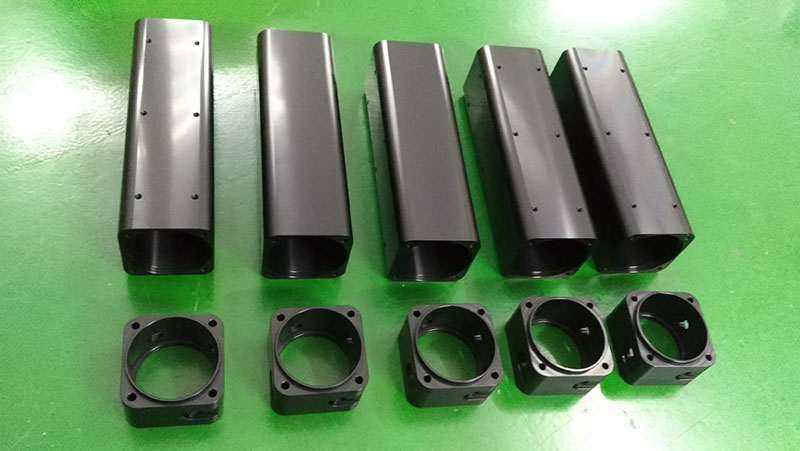Discover the power of precision with high-tolerance CNC machined parts. Learn how they improve quality, durability, and industry performance.
Introduction to High-Tolerance CNC Machined Parts
In the world of modern manufacturing, high-tolerance CNC machined parts stand as the gold standard for precision. These aren’t your everyday nuts and bolts. We’re talking about components designed with tolerances down to a few microns. That means parts so exact, even a human hair is too thick to compare. These parts are crucial when even the slightest error can lead to catastrophic failure—think medical implants, airplane engines, or spacecraft parts.
What makes them different from standard machined parts? It all comes down to accuracy, stability, and control. High-tolerance machining ensures that every curve, hole, or edge fits perfectly, no matter how complex the design. In industries where “almost right” is simply not good enough, this level of precision is non-negotiable.
Machining Shops that produce these components use top-tier machines, rigorous quality checks, and experienced machinists who know how to balance science with skill. Whether you’re in aerospace or robotics, if you’re seeking parts that truly deliver under pressure, high-tolerance CNC machining is the way to go.
High-Tolerance CNC Machined Parts
Let’s take a deeper dive into what this term really means. High-tolerance CNC machined parts refer to components produced using computer numerical control (CNC) machines that meet very tight dimensional requirements. These parts usually fall within a tolerance of ±0.0002 inches or tighter. For comparison, the width of a human hair is about 0.003 inches—15 times larger.
To achieve this, manufacturers use ultra-precise tools, carefully calibrated machines, and environmental controls (like temperature and humidity). Even a small shift in temperature can cause material expansion and ruin an entire batch.
For instance, an aerospace supplier might require a titanium part to fit precisely into a jet engine. If it’s even slightly off, it could cause excessive wear or vibration, putting safety at risk. The same goes for surgical tools, microfluidic devices, and other life-critical systems.
In these environments, high-tolerance CNC machined parts aren’t just better—they’re essential.
Understanding CNC Tolerances and Their Importance
Tolerances are the unsung heroes of CNC machining. Simply put, a tolerance tells the machinist how much room for error is acceptable. For high-tolerance parts, that “room” is practically zero. These tolerances are usually specified in thousandths of an inch (inches) or hundredths of a millimeter (metric).
So why do they matter? Because a slightly too-big hole can cause fluid leaks. A shaft just a bit too long might jam inside an engine. Tighter tolerances mean better fits, longer lifespans, and fewer performance issues. It’s no surprise industries like aerospace, automotive, defense, and medical devices demand nothing but the best.
There are different classes of tolerances—general machining might require ±0.01″, while high-precision tasks demand ±0.0002″ or tighter. It takes a trained eye, steady hands, and cutting-edge software to pull that off consistently.

Applications of High-Tolerance CNC Machining
You’ll find high-tolerance CNC parts in places where failure is not an option. Here’s a breakdown of where they show up:
- Industrie médicale: From bone screws to dental tools, accuracy ensures safety and functionality.
- Aérospatiale: Jet engines, turbine blades, and control systems all depend on perfectly matched parts.
- Automobile: High-performance and electric vehicles use tight-tolerance parts for powertrains and battery systems.
- Robotics & Automation: Precision equals smooth, repeatable motion in industrial robots.
- Defense & Military: Firearms, drones, and optics systems require flawless integration.
- Électronique: Heat sinks, connectors, and semiconductor housings all need microscopic tolerances.
Each application demands not just precision, but repeatability. That’s where CNC technology truly shines—delivering identical results, time after time.
Materials Best Suited for High-Tolerance CNC Machining
Not all materials play well with tight tolerances. Some expand, chip, or warp too easily. That’s why choosing the right raw material is half the battle. Here are some favorites:
| Matériau | Best Used For | Key Benefits |
| Aluminum (7075, 6061) | Aerospace, electronics | Lightweight, strong, easy to machine |
| Acier inoxydable (304, 316) | Medical, marine, automotive | Corrosion-resistant, durable |
| Titane | Aérospatiale, implants médicaux | Biocompatible, lightweight, strong |
| PEEK | Medical devices, electronics | High thermal resistance, low friction |
| Laiton | Plumbing, electronics | Excellent machinability, corrosion-resistant |
Each material reacts differently under stress and cutting tools. For instance, titanium is tough but wears tools quickly, while PEEK requires slower speeds to prevent melting. The best machine shops know how to adapt machining parameters for each material to maintain tight tolerances.
Advanced Machines and Technology Behind the Process
Achieving those razor-thin tolerances isn’t luck—it’s high-tech engineering. Here’s what helps make it possible:
- 5-Axis CNC Machines: Offer more flexibility and access angles, especially for complex geometries.
- Swiss-type Lathes: Ideal for small, long parts that require extreme accuracy.
- Micromachining Tools: These tiny cutters work best on miniature parts like implants and sensors.
- Touch Probes and Sensors: Real-time feedback helps correct any deviation mid-process.
- CAD/CAM Software: Advanced software allows simulation before actual cutting, reducing trial and error.
Some shops even use closed-loop systems that automatically adjust for thermal expansion or tool deflection during machining. This level of control is critical when your margin for error is practically zero.
Challenges in Achieving High Tolerance in CNC Machining
It’s not all smooth sailing in precision machining. Here are a few common hurdles:
- Tool Wear: Even the best cutters wear out. As they dull, they can shift your tolerances.
- Heat Deformation: Metal expands when hot. If not controlled, it can warp parts during machining.
- Vibration: Unstable setups can lead to “chatter,” making surfaces rough or inaccurate.
- Material Inconsistencies: Variability in raw materials can affect how they behave during cutting.
- Human Error: Even automated processes rely on people for setup and verification.
The good news? Most of these issues can be managed with proper training, tooling, and process control.
Quality Control Methods for Verifying High Tolerance
Making a high-tolerance part is only half the job. Verifying it is the other. Here’s how it’s done:
- CMM (machine à mesurer les coordonnées): Measures part dimensions with pinpoint accuracy.
- Laser Scanners: Create a 3D map of the part to detect flaws.
- Optical Comparators: Use magnified images to measure part profiles.
- GD&T (Geometric Dimensioning & Tolerancing): Ensures form, fit, and function are maintained.
- SPC (Statistical Process Control): Monitors machining trends over time.
The best machine shops don’t just make parts—they prove they’re made right, every single time.
How to Choose the Right Manufacturer for High-Tolerance Parts?
Picking the right shop is key. Here’s what to look for:
- Experience: Do they specialize in your industry?
- Certifications: ISO 9001, AS9100, or ITAR compliance speak volumes.
- Inspection Tools: Do they use CMMs or lasers to verify quality?
- Sample Tolerances: Can they show proof of previous high-precision work?
- Material Handling: Do they understand how different materials behave?
A trustworthy supplier will walk you through the process, show you previous work, and offer guidance without over-promising.
Cost Factors and Lead Times in High-Tolerance Machining
Let’s talk money and time. High-tolerance machining isn’t cheap, and here’s why:
- Tooling Costs: Precision cutters and calibration tools cost more.
- Le temps des machines: Slower speeds ensure better accuracy but take longer.
- Inspection Time: Extra steps are needed to confirm quality.
- Setup Complexity: Each job might need a custom jig or fixture.
Want to manage costs? Be clear on what tolerances are truly necessary. A part specified at ±0.0002″ when ±0.001″ would work can double your price and lead time.
High-Tolerance CNC Machined Parts at a Glance
| Fonctionnalité | High Tolerance | Standard Tolerance |
| Dimensional Accuracy | ±0.0002″ or tighter | ±0.005″ to ±0.01″ |
| Common Industries | Aerospace, Medical, Defense | General Manufacturing |
| Inspection Method | CMM, Laser Scanning | Calipers, Micrometers |
| Temps d'usinage | Slower, Multi-step | Faster, Standard operations |
| Material Options | Titanium, PEEK, Aluminum | Mild Steel, Brass, Plastics |
FAQ
What does “high-tolerance” mean in CNC machining?
A: It means the part must be machined within a very small allowable error range, usually less than ±0.0002 inches.
Why are high-tolerance parts more expensive?
A: They require slower machining, specialized tools, more inspection, and often higher-grade materials.
Can any CNC shop make high-tolerance parts?
A: Not really. It takes special machines, software, skilled staff, and experience to deliver that level of precision.
What’s the best material for tight tolerances?
A: Aluminum is great for starters, but titanium and stainless steel also perform well in precision environments.
Do I always need high-tolerance parts?
A: Not always. Only use them when fit, performance, or safety absolutely demands it.
How do I verify if a part meets its tolerance?
A: Your supplier should provide inspection reports using CMM or similar devices, backed by industry standards.
Conclusion
In industries where performance, safety, and longevity matter, high-tolerance CNC machined parts are the secret behind the scenes. They demand skill, technology, and discipline—but the payoff is precision that lasts. Whether you’re designing a heart valve or a rocket nozzle, working with the right machining partner makes all the difference.
Ready to bring your designs to life with unmatched precision? Contact a trusted high-tolerance CNC machining expert aujourd'hui !



